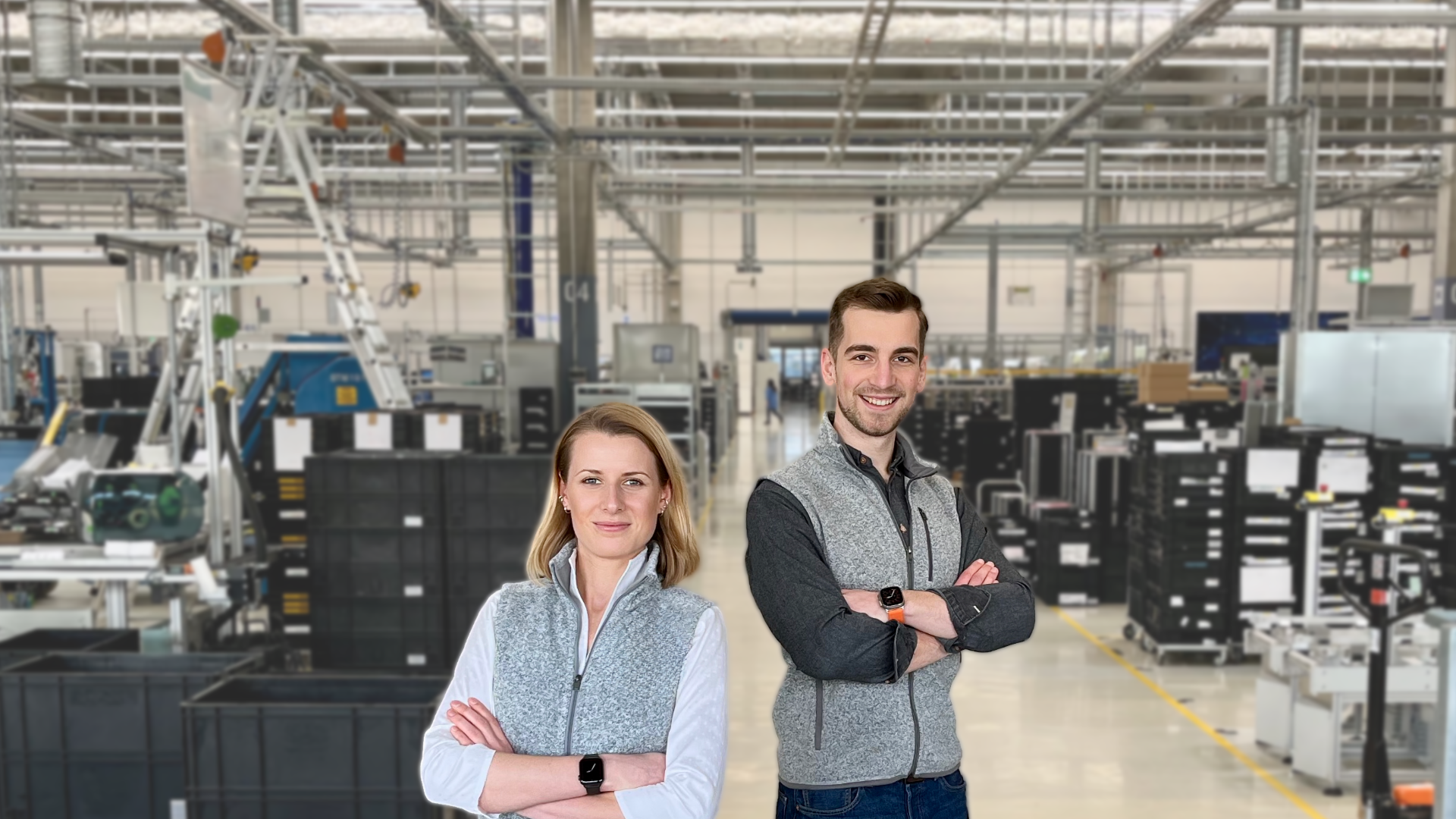Making smarter use of the power grid with flexibility - why we invested in Orus Energy
Making smarter use of the power grid with flexibility - why we invested in Orus Energy
The transition to renewable energy and sustainable usage of energy is a monumental shift. The International Energy Agency (IEA) has identified the power grid as the primary bottleneck hindering this transition. The evolving global energy landscape has been exacerbated by less stable production and increasing consumption. Despite the expansion of renewable energy sources, the power grid struggles to keep pace with rising electrification demand, resulting in the looming threat of blackouts due to mismatches between power generation and consumption.

To mitigate such crises, Transmission System Operators (TSOs) such as RTE in France necessitate flexible power resources to stabilize the grid during stress periods. Flexibility in electricity consumption has emerged as a critical element in supporting the energy transition and reducing dependence on fossil fuels. This involves adjusting power usage in applications like heating, air conditioning, and electric vehicle charging according to grid needs, thereby alleviating strain during peak periods.
Commercial buildings, responsible for over one-third of electricity consumption during peak times, can play a significant role in this transition. That’s what sparked our interest in Orus Energy, which is transforming the relationship between buildings and the power grid by leveraging flexibility in electricity consumption. The team has developed a demand-side flexibility platform enabling commercial building operators to automatically shift energy consumption during peak energy periods and receive compensation for off-peak hours.
Here are some more reasons why we believe in Orus Energy:
⚖️ Favorable European regulatory environment: There is a growing emphasis on demand-side flexibility as a means to enhance grid stability, integrate renewable energy sources, and reduce overall energy consumption. Regulatory frameworks such as the Clean Energy Package and the EU's Energy Efficiency Directive are driving the adoption of demand response and flexibility programs. Additionally, European regulations (such as France's décret BACS) mandate the widespread deployment of control systems in buildings by 2025 for those over 2000 qm and by 2027 for those over 1000 qm, facilitating their control for flexibility.
♻️ GTM via demand response: Since the energy crisis of 2022, most building managers are seeking quick-wins with a rapid return on investment of less than 3 years. Electrical flexibility presents a compelling option compared to solar PV installations (with a break-even point approximately after 14 years), HVAC upgrades (break-even approximately after 7 years), or a Building Management System (BMS) upgrade (break-even approximately after 3 years).

👍 Early signs of traction: The team developed the first version of the product within a year and commenced commercialization nine months ago, already securing impressive first customers such as IKEA and La Poste Immobilier. The platform already registers 1 million qm of real estate.
🔆 Rising electrification of assets: The electrification of end uses such as transportation and heating will increase overall electricity demand and create new opportunities for demand-side flexibility through smart charging and demand response programs.
🚀 A young stellar team: The team is young, and we are incredibly impressed by the accomplishments of Alex, Fanny and Théo with regard to their vision, and their effective leadership in propelling the company forward. Throughout our due diligence, we gained insight into their routines, collaborative work methods, motivating factors, and aspirations for success within the industry.
Overall, we firmly believe that Orus Energy has what it takes to make smarter use of the power grid at scale with flexibility, and are super excited to be part of this journey 🔮
To all fellow entrepreneurs and investors: Feel free to reach out to us (florian.schweitzer@b2venture.vc & johanna.junkermann@b2venture.vc) if you are interested to learn more about our view on the market or if you would like to get in touch with the founders.
The transition to renewable energy and sustainable usage of energy is a monumental shift. The International Energy Agency (IEA) has identified the power grid as the primary bottleneck hindering this transition. The evolving global energy landscape has been exacerbated by less stable production and increasing consumption. Despite the expansion of renewable energy sources, the power grid struggles to keep pace with rising electrification demand, resulting in the looming threat of blackouts due to mismatches between power generation and consumption.

To mitigate such crises, Transmission System Operators (TSOs) such as RTE in France necessitate flexible power resources to stabilize the grid during stress periods. Flexibility in electricity consumption has emerged as a critical element in supporting the energy transition and reducing dependence on fossil fuels. This involves adjusting power usage in applications like heating, air conditioning, and electric vehicle charging according to grid needs, thereby alleviating strain during peak periods.
Commercial buildings, responsible for over one-third of electricity consumption during peak times, can play a significant role in this transition. That’s what sparked our interest in Orus Energy, which is transforming the relationship between buildings and the power grid by leveraging flexibility in electricity consumption. The team has developed a demand-side flexibility platform enabling commercial building operators to automatically shift energy consumption during peak energy periods and receive compensation for off-peak hours.
Here are some more reasons why we believe in Orus Energy:
⚖️ Favorable European regulatory environment: There is a growing emphasis on demand-side flexibility as a means to enhance grid stability, integrate renewable energy sources, and reduce overall energy consumption. Regulatory frameworks such as the Clean Energy Package and the EU's Energy Efficiency Directive are driving the adoption of demand response and flexibility programs. Additionally, European regulations (such as France's décret BACS) mandate the widespread deployment of control systems in buildings by 2025 for those over 2000 qm and by 2027 for those over 1000 qm, facilitating their control for flexibility.
♻️ GTM via demand response: Since the energy crisis of 2022, most building managers are seeking quick-wins with a rapid return on investment of less than 3 years. Electrical flexibility presents a compelling option compared to solar PV installations (with a break-even point approximately after 14 years), HVAC upgrades (break-even approximately after 7 years), or a Building Management System (BMS) upgrade (break-even approximately after 3 years).

👍 Early signs of traction: The team developed the first version of the product within a year and commenced commercialization nine months ago, already securing impressive first customers such as IKEA and La Poste Immobilier. The platform already registers 1 million qm of real estate.
🔆 Rising electrification of assets: The electrification of end uses such as transportation and heating will increase overall electricity demand and create new opportunities for demand-side flexibility through smart charging and demand response programs.
🚀 A young stellar team: The team is young, and we are incredibly impressed by the accomplishments of Alex, Fanny and Théo with regard to their vision, and their effective leadership in propelling the company forward. Throughout our due diligence, we gained insight into their routines, collaborative work methods, motivating factors, and aspirations for success within the industry.
Overall, we firmly believe that Orus Energy has what it takes to make smarter use of the power grid at scale with flexibility, and are super excited to be part of this journey 🔮
To all fellow entrepreneurs and investors: Feel free to reach out to us (florian.schweitzer@b2venture.vc & johanna.junkermann@b2venture.vc) if you are interested to learn more about our view on the market or if you would like to get in touch with the founders.

The Author

Johanna Junkermann
Investment Manager
Johanna Junkermann is Investment Manager and part of the b2venture Fund team.

Team


















.png)




.jpg)
-min.png)


.jpg)













































.jpg)





















